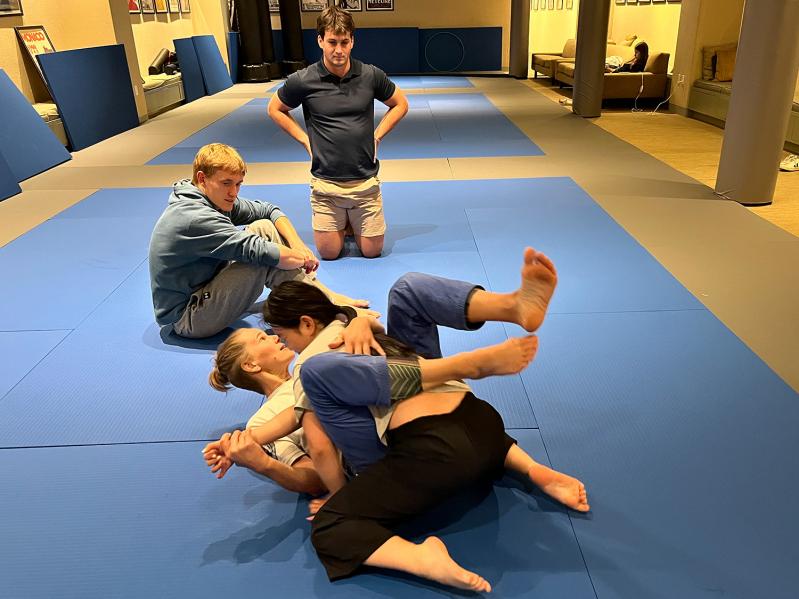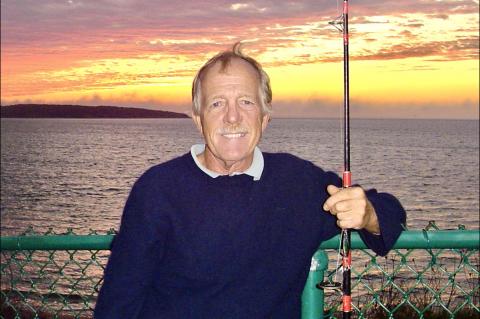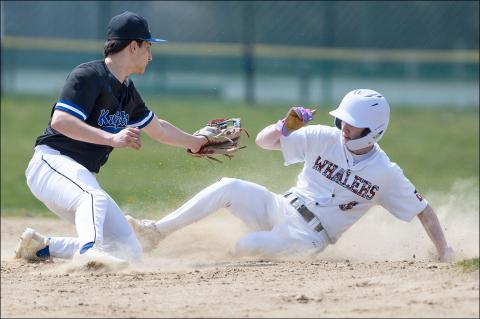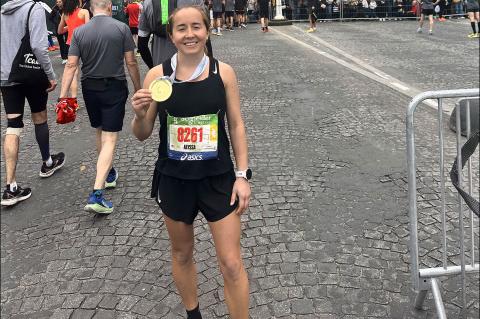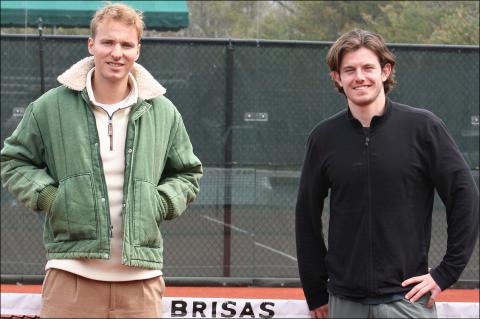High school wrestling is an up-and-coming sport again in East Hampton, but high school jiu-jitsu? It’s happening here at the Ross School.
It all started when Noah Filippelli, a Ross postgrad student and Middlebury College-bound lacrosse player, wanted to learn Brazilian jiu-jitsu, which he said is piquing the curiosity of many young people these days thanks to the growing popularity of mixed martial arts.
“We had this functional fitness class with a little lifting every day. Every once in a while, we’d explore random things,” he said in a recent interview. There were punching bags in the gym, which inspired him to inquire about jiu-jitsu. “I like U.F.C., which is mixed martial arts, but I’d never done it before. I thought it would be pretty cool.”
One thing led to another, and soon it was a full-fledged elective class, taught in trimesters of 10 weeks at a time. The teacher is Virva Hinnemo of Springs, who’s also well known here as an artist. Her own jiu-jitsu practice actually started after a back injury. “Years ago, I wanted to build my core strength so that I wouldn’t feel so injured, so I started doing jiu-jitsu,” she said.
“I loved the idea that a school would embrace what you’d call a fighting art on campus,” she continued. “But you have to be careful how you market it, because you can’t really look at parents and say, ‘Let me show your children how to choke each other.’ ”
But it’s a structured, supervised sort of choking. Proper techniques are emphasized so that students spar with each other smartly and efficiently. They also learn defenses, of course, and ways to achieve an advantage over an opponent. So far, there haven’t been any injuries.
“We’re not fighting 100 percent. We’re grappling with technique and not with force,” Hinnemo said. “I was very proud of the level of good jiu-jitsu that we had. It’s an incredibly close combat sport — you are literally in someone’s face, holding them, pinning them.”
In a 2021 episode of the jiu-jitsu podcast “The Strenuous Life” with Stephan Kesting, Dom Hoskins, a coach in California and professional black-belt competitor, broke down the benefits of teaching the sport in public schools, specifically in the inner-city schools where he often works.
“It makes them present . . . and mindful of their feelings and why they are feeling that way,” Hoskins said. “We learn perseverance, resilience — nobody’s good at this when they first start.” He later continued, “This is teaching your kids certain things that make them excel . . . and that consistency starts to leak into other parts of your life.”
Ross isn’t an inner-city school, of course, but Filippelli said he has seen his confidence grow. “It’s not about strength,” he said. “It’s all about technique. We talk about how in real life, if there is a physical altercation, and if you know what you’re doing, it’s so much better for you.”
“I call it playing chess with your body,” Hinnemo added. “There are so many possible moves and you’re always thinking a few moves ahead and trying to outdo your opponent.”
The sport “changes how you feel in the world,” and helps you learn how to not overreact, she said. Students of jiu-jitsu report feeling more comfortable about being in uncomfortable situations. “It also helps relieve stress, which a lot of sports do, but in this case you’re also problem-solving while you’re under this level of stress,” Hinnemo said.
School’s essentially out for the year, of course, but Hinnemo will now shift to offering a summer schedule for adults. Classes are at 6:30 p.m. Monday through Thursday in the basement dojo at the Ross Tennis Academy, with 6:30 a.m. classes on Wednesdays and Fridays and “open mat” on Saturdays at 11.

